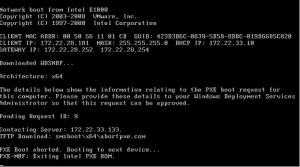How to Enter BIOS: A Comprehensive Guide


How to Enter BIOS: A Comprehensive Guide


Introduction
The Basic Input/Output System (BIOS) is a firmware interface that allows users to configure and control various hardware settings on their computer. Accessing the BIOS is essential for tasks such as changing boot order, adjusting system settings, and updating firmware. In this comprehensive guide, we will walk you through the step-by-step process of entering the BIOS on different computer models, including UEFI-based systems, along with important tips to ensure a successful entry.
1. Entering BIOS on Different Computer Models
The method to enter the BIOS may vary depending on the computer manufacturer and model. Below, we outline the most common methods for accessing the BIOS on different systems.
1. Entering BIOS on Dell Computers
Restart your Dell computer.
As the computer boots up, press the F2 key repeatedly until the BIOS setup utility appears.
In some Dell models, you may need to press the F12 key to access the boot menu. From there, you can select “BIOS Setup” to enter the BIOS.
2. Entering BIOS on HP Computers
Restart your HP computer.
As the computer starts, press the Esc key repeatedly to bring up the startup menu.
From the startup menu, press the F10 key to access the BIOS setup utility.
3. Entering BIOS on Lenovo Computers
Restart your Lenovo computer.
As the computer boots up, press the F1 or F2 key repeatedly to enter the BIOS setup utility. The specific key depends on the Lenovo model, so consult your computer’s manual if unsure.
4. Entering BIOS on ASUS Computers
Restart your ASUS computer.
As the computer starts, press the Delete key repeatedly to enter the BIOS setup utility. On some ASUS models, you may need to press the F2 key instead.
5. Entering BIOS on Acer Computers
Restart your Acer computer.
As the computer boots up, press the F2 key repeatedly to enter the BIOS setup utility. On some Acer models, you may need to press the Del key or F10 key instead.
6. Entering BIOS on MSI Computers
Restart your MSI computer.
As the computer starts, press the Delete key repeatedly to enter the BIOS setup utility. On some MSI models, you may need to press the F2 key instead.
7. Entering BIOS on Custom-Built Computers
For custom-built computers, the BIOS entry method depends on the motherboard manufacturer. Here are some common options:
ASUS motherboards: Press the Delete key or F2 key.
MSI motherboards: Press the Delete key or F2 key.
Gigabyte motherboards: Press the Delete key or F2 key.
ASRock motherboards: Press the Delete key or F2 key.
Intel motherboards: Press the F2 key or F10 key.
Refer to your motherboard’s manual for the specific key or key combination to enter the BIOS.
2. Entering UEFI Firmware Settings
Modern computers often use UEFI (Unified Extensible Firmware Interface) instead of traditional BIOS. The method to access the UEFI firmware settings is slightly different:
Method 1: Windows Settings
Open the Windows Start menu and click on the “Settings” (gear) icon.
In the Windows Settings window, click on “Update & Security.”
From the left pane, select “Recovery.”
Under the “Advanced startup” section, click on the “Restart now” button.
Your computer will restart and take you to the Advanced Startup Options menu.
Select “Troubleshoot,” then “Advanced options,” and finally, “UEFI Firmware Settings” or “BIOS settings.” Click on it to enter the UEFI firmware settings.
Method 2: Shift + Restart
Click on the Windows Start menu and then click on the Power icon.
Hold down the Shift key on your keyboard and click on “Restart.”
Your computer will restart and take you to the Advanced Startup Options menu.
Select “Troubleshoot,” then “Advanced options,” and finally, “UEFI Firmware Settings” or “BIOS settings.” Click on it to enter the UEFI firmware settings.
Method 3: UEFI Boot Menu
Restart your computer.
As the computer boots up, look for a key prompt to enter the UEFI Boot Menu. Common keys include F8, F10, F11, or F12, but it can vary depending on the manufacturer.
Press the corresponding key repeatedly until the UEFI Boot Menu appears.
From the UEFI Boot Menu, navigate to the “UEFI Firmware Settings” or “BIOS settings” option and press Enter to enter the UEFI firmware settings.
Important Tips for Entering BIOS
1. Timing is crucial:
Press the designated key(s) or combination immediately after turning on your computer. Timing is essential to enter the BIOS successfully.
2. Pay attention to startup messages:
Watch for on-screen messages during the computer’s startup process. Look for any instructions or prompts that indicate the key(s) or combination to access the BIOS.
3. Consult the computer or motherboard manual:
If you’re unsure about the key(s) or combination to enter the BIOS, refer to the computer or motherboard manual. It provides specific instructions tailored to your system.
4. Avoid modifying settings unless necessary:
Be cautious when making changes in the BIOS. Incorrect modifications can lead to system instability or even prevent your computer from booting. Only modify settings if you understand their purpose and are confident about the changes you’re making.
5. Update BIOS cautiously:
If you decide to update the BIOS firmware, follow the manufacturer’s instructions carefully. An incorrect BIOS update can cause irreversible damage to your system.
Conclusion
Entering the BIOS or UEFI firmware settings allows you to access and modify essential system settings on your computer. By following the step-by-step instructions provided in this guide and considering the important tips, you can confidently enter the BIOS or UEFI settings and customize settings according to your needs.
Remember to exercise caution when making changes in the BIOS or UEFI settings, as incorrect modifications can impact system stability. Consult the computer or motherboard manual for specific instructions tailored to your system.








